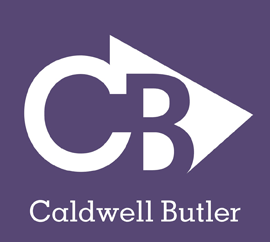
Estimates show that 33% of any given healthcare process is consumed by waste. Imagine the impact of reducing your operating budget by 33% without sacrificing service or care. While it is nearly impossible to eliminate all waste from healthcare, it is possible to reduce waste by 2-5% for most healthcare organizations each 100 days. This can be accomplished with manager-generated ideas that focus on holistic improvement rather than slash and burn budget cuts.
CBA has developed a proprietary 100-Day Workout centered on waste identification and elimination. CBA's approach places the focus on quality first while achieving cost recovery as a by-product of improving quality.
Quality Waste Recovery has been an excellent way for organizations to begin their journey to become a "Leaner" organization. Quality Waste Recovery has consistently produced a high ROI for our clients, produced significant results in the first 100 days, and allows organizations the opportunity to get started with minimal preparation or delays. CBA's Quality Waste 100-Day Workout follows the proven process described below:
CBA's expert staff provides your managers with an orientation on how to identify 7 categories of waste. Managers are exposed to Lean concepts and process thinking. Your staff begins to view their work processes through Lean eyeglasses. CBA recommends that managers be provided with realistic healthcare specific examples illustrating the practical application of Lean methods to stimulate the managers thinking.
Managers are exposed to the concepts of Value Added, Non-Value Added, and Business Value Added process steps. This provides a solid foundation for identifying waste as well as opportunities to improve patient flow through the re-sequencing of business value-added processes.
The goal is to have the managers translate their learning into action. Managers are divided into small teams of 4 to 5 persons. Each team is challenged with identifying at least one example in each of the 7 categories. Each manager is responsible for identifying at least 4 categories of waste in their area as a minimum. During the Waste Walk Practicum managers visit their departments and complete the Waste Walk practicum.
Once the waste walk is completed, managers participate in an exercise to apply 18 of the 84 change concept. Each change concept provides a potential solution for eliminating or reducing waste while ensuring that improvements are sustainable and hardwired into the organization. Once completed, each team conducts a report out and share ideas for improvement. Teams are encouraged to discuss how they can Rapid Cycle Test (RCT) their concept and move toward implementation of the improvement.
To create a sense of urgency, each manager is expected to successfully make two changes per month or 8 changes in the next 100-Days. These must be changes, that if made will produce some form of financially tangible cost recovery. Managers initiate their 100-Day Action Plans as part of creating an accountability structure. Each plan defines the details on the proposed changes, the date it is to be initiated, date it is completed, and the estimated or actual financial impact. To make the tracking of implementation easy, CBA offers clients EXCELeratorTM, an Internet based tracking tool. Plans are then entered into EXCELEratorTM to allow for tracking implementation and progress toward the organization's goals.
Success requires that managers receive one-on-one support in applying Lean concepts to their respective department processes. In addition, managers are coached in methods of Rapid Cycle Tests to demonstrate the efficacy and impact of their change. Rapid Cycle Testing reduces the barriers to change and accelerates progress. The 100-Day Workout structure ensures that progress or its absence remains highly visible and that positive peer pressure is created. Managers participate in monthly check-ins with senior leaders where their progress is updated and results of their changes are presented.
Starting your Lean journey with a Quality Waste Workout provides several advantages over starting with a single departmental focus. These advantages include: